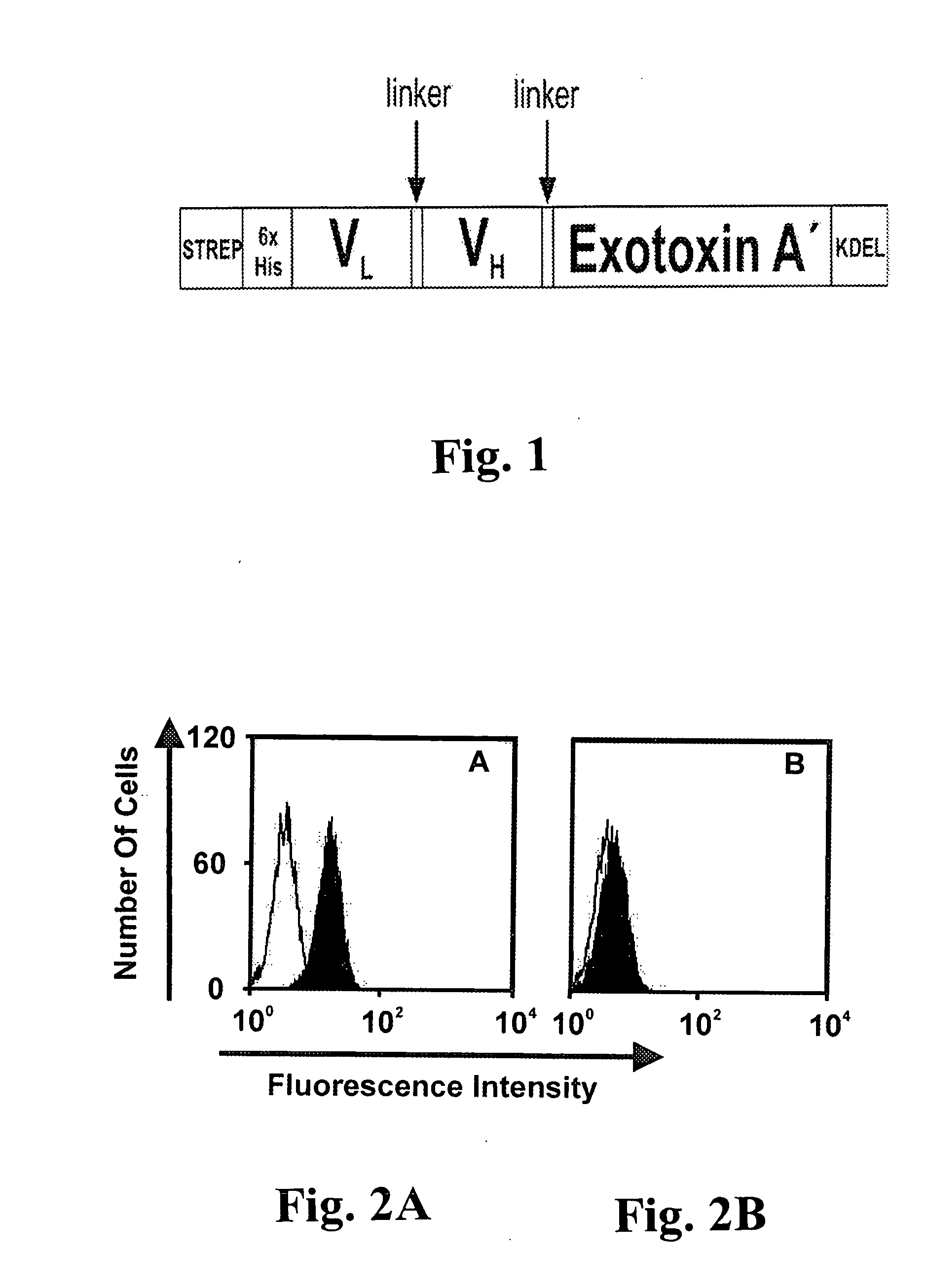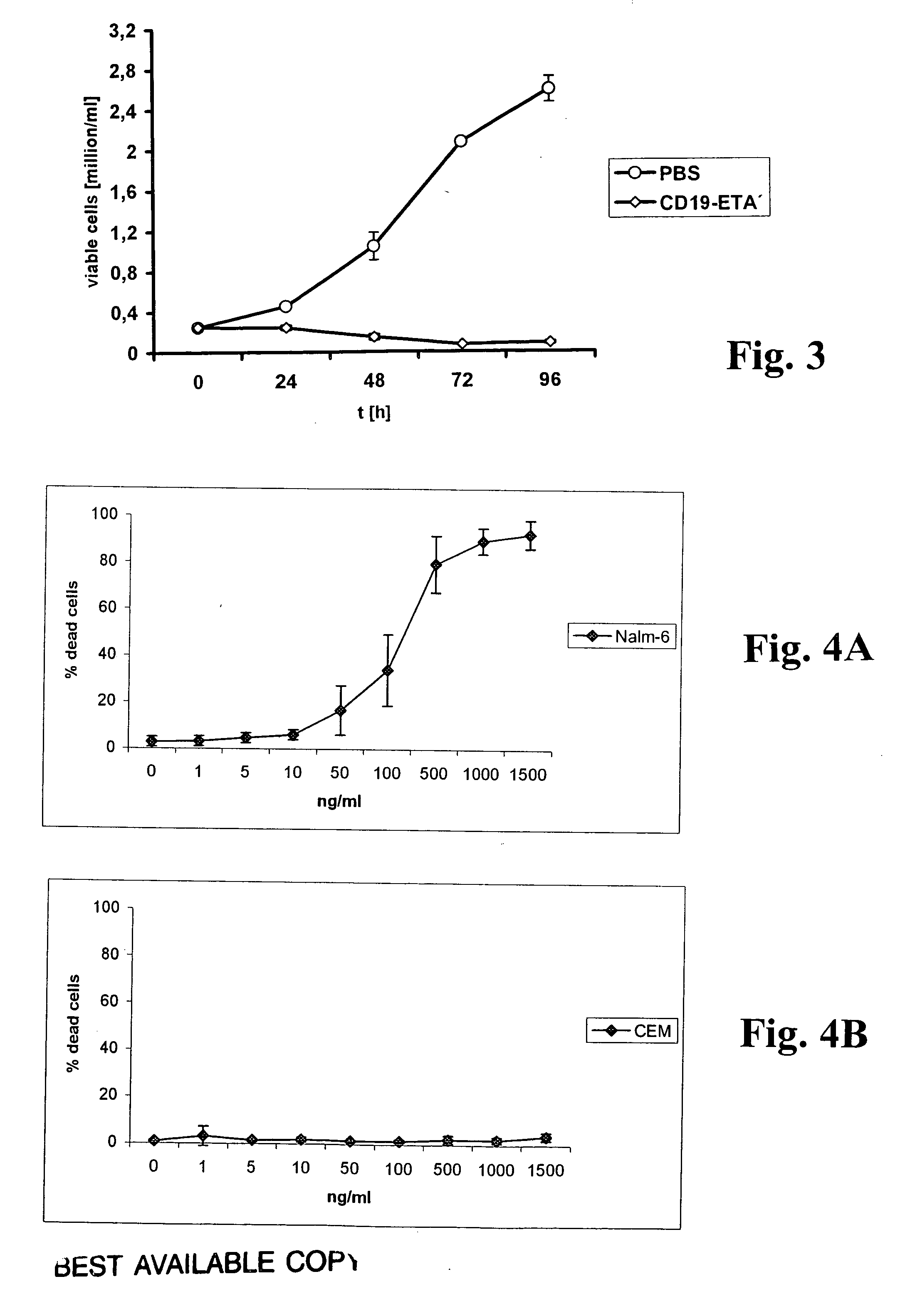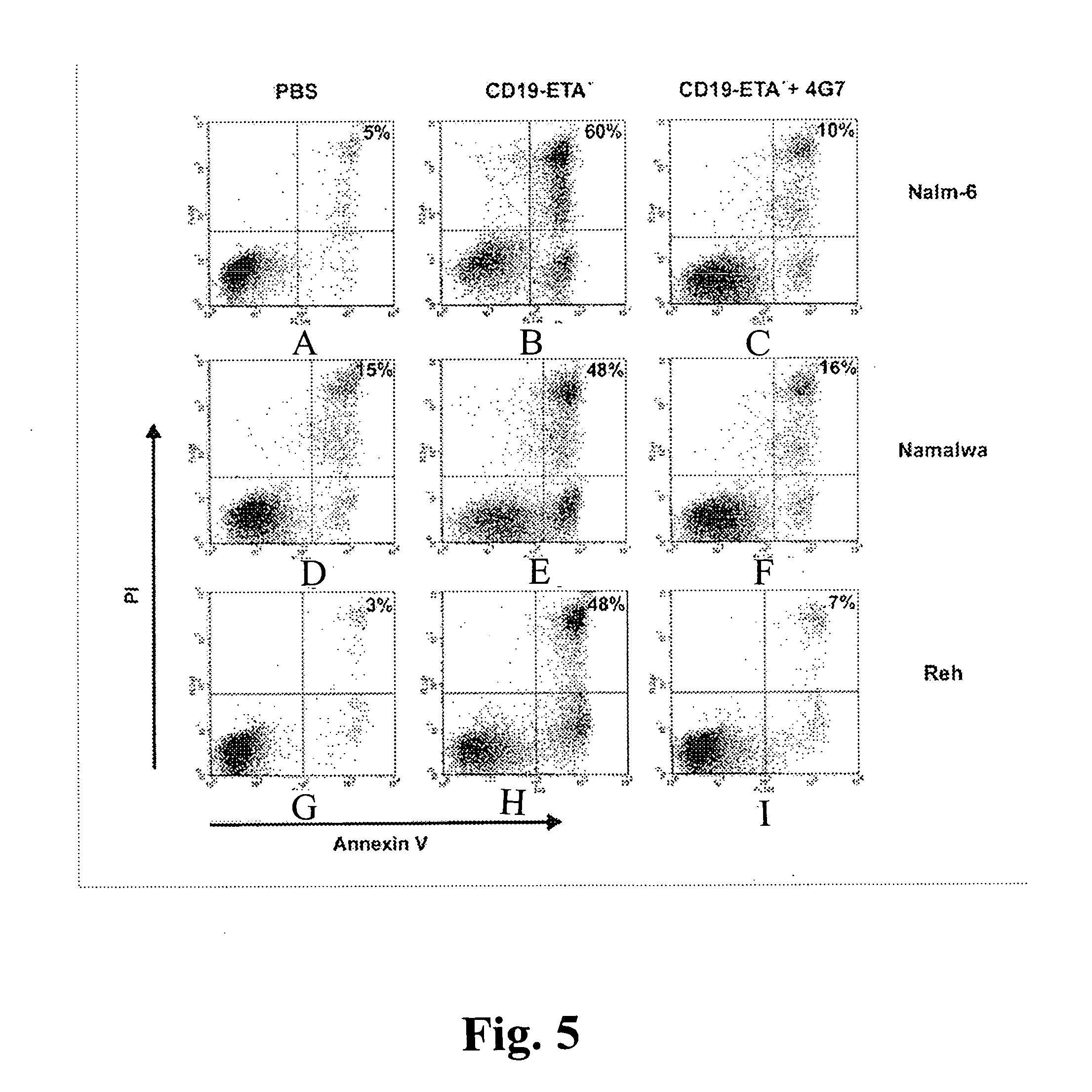CD19-specific immunotoxin and treatment method
a technology of immunotoxin and treatment method, which is applied in the direction of antibody medical ingredients, drug compositions, immunological disorders, etc., can solve the problems of limited use of immunoconjugates, and achieve the effect of promoting protein transport and resisting extracellular cleavag
- Summary
- Abstract
- Description
- Claims
- Application Information
AI Technical Summary
Benefits of technology
Problems solved by technology
Method used
Image
Examples
example 1
Preparation of CD-19 scFv Antibody
[0048] Total RNA was prepared from the hybridoma 4G7 (Meeker, T. C., Miller, R. A., Link, M. P., Bindl, J., Warnke, R., and Levy, R. A unique human B lymphocyte antigen defined by a monoclonal antibody, Hybridoma, 3: 305-320, 1984; Krebber, A., Bornhauser, S., Burmester, J., Honegger, A., Willuda, J., Bosshard, H. R., and Pluckthun, A. Reliable cloning of functional antibody variable domains from hybridomas and spleen cell repertoires employing a reengineered phage display system. J Immunol Methods, 201: 35-55, 1997). First-strand cDNA was prepared from 10-15 μg of total RNA (Krebber, A., Bornhauser, S., Burmester, J., Honegger, A., Willuda, J., Bosshard, H. R., and Pluckthun, A. Reliable cloning of functional antibody variable domains from hybridomas and spleen cell repertoires employing a reengineered phage display system. J Immunol Methods, 201: 35-55, 1997). PCR amplification of immunoglobulin variable region cDNAs and cloning into the phagemid...
example 2
Construction and Expression of scFv-ETA′ Fusion Protein
[0051] Sequences coding for the CD19-specific scFv were excised from the pAK400-anti CD19 expression construct and were cloned into the vector pASK / HisCD19ETA#3 (M. Peipp, unpublished data). The plasmid was digested with NcoI and NotI and ligated into the vector pet27b(+)-Strep-His-CD33-ETA′-KDEL (M. Schwemmlein, unpublished data), resulting in the vector pet27b(+)-STREP-His-CD19-ETA′-KDEL.
[0052] The scFv-ETA′ fusion protein was expressed under osmotic stress conditions as described (Barth, S., Huhn, M., Matthey, B., Tawadros, S., Schnell, R., Schinkothe, T., Diehl, V., and Engert, A. Ki-4(scFv)-ETA′, a new recombinant anti-CD30 immunotoxin with highly specific cytotoxic activity against disseminated Hodgkin tumors in SCID mice. Blood, 95: 3909-3914, 2000). Induced cultures were harvested 16-20 h after induction. The bacterial pellet from 1 liter culture was resuspended in 200 ml of periplasmatic extraction buffer [100 mM Tris...
example 3
Characterization of scFv-ETA′ Immunotoxin
A. Immunotoxin Binding to Cells
[0053] The binding of scFvs to cells was analyzed using a FACSCalibur FACS instrument and CellQuest software (Becton Dickinson, Mountain View, Calif.). Cells were stained with scFv antibodies as described (Peipp, M., Simon, N., Loichinger, A., Baum, W., Mahr, K., Zunino, S. J., and Fey, G. H. An improved procedure for the generation of recombinant single-chain Fv antibody fragments reacting with human CD13 on intact cells. J Immunol Methods, 251: 161-176, 2001). A nonrelated scFv served as a control for background staining. Ten thousand events were collected for each sample, and analyses of whole cells were performed using appropriate scatter gates to exclude cellular debris and aggregates. To monitor binding of the scFv-ETA′ fusion protein, 5×105 cells were incubated for 30 min on ice with 20 μl of the immunotoxin at a concentration of 5 μg / ml. A nonrelated immunotoxin served as a control for background stai...
PUM
| Property | Measurement | Unit |
|---|---|---|
| pH | aaaaa | aaaaa |
| pH | aaaaa | aaaaa |
| concentration | aaaaa | aaaaa |
Abstract
Description
Claims
Application Information
 Login to View More
Login to View More - R&D
- Intellectual Property
- Life Sciences
- Materials
- Tech Scout
- Unparalleled Data Quality
- Higher Quality Content
- 60% Fewer Hallucinations
Browse by: Latest US Patents, China's latest patents, Technical Efficacy Thesaurus, Application Domain, Technology Topic, Popular Technical Reports.
© 2025 PatSnap. All rights reserved.Legal|Privacy policy|Modern Slavery Act Transparency Statement|Sitemap|About US| Contact US: help@patsnap.com



